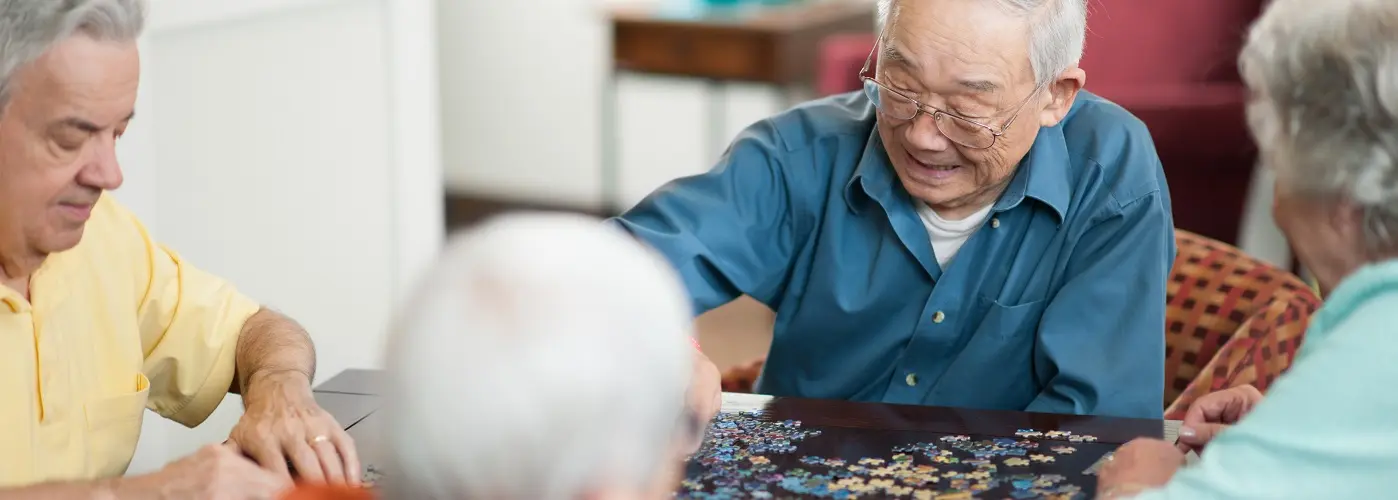
A stroke happens when a blood vessel transporting oxygen to the brain is blocked or bursts. The affected part of the brain is thus deprived of the blood (or oxygen) it needs, and the brain cells perish.
This disease can cause death or physical and mental disability, and in 2019, stroke affected 101.5 million people globally. However, stroke survivors can also go on to live a full life.
This article provides ten effective brain exercises that will help stimulate the brain after a stroke occurs.
Yes, the good news is that brain cells can regenerate, and thus, stroke survivors can regain brain activity. However, a comprehensive post-stroke care plan is vital for this to happen. Part of the plan should include brain exercise to stimulate the brain to heal.
Here are ten cognitive exercises for stroke recovery:

Board games keep people engaged and require stroke patients to focus, concentrate and use their memory skills. In addition, cognitive skills such as problem-solving, information retention, information processing, deductive reasoning, and organisation are also needed when playing board games.
Besides this, the games also provide patients with the opportunity to socialise. This can reduce stress, anxiety and boredom, and thus, positioning stroke patients in a better emotional place as they heal.
Consider board games such as Connect Four, Checkers, Rumikub, Set, Mahjong and Spot It.
Card matching is a brain exercise that helps stroke patients to recall and scan by challenging them to remember the position of different cards. All you need is a deck of cards for this visual memory game.
First, place the deck of cards face down on the table and space them out. Uncover only two cards each time to find matching pairs. Take turns doing so if there are more than one player.
Stroke patients may struggle with visual/spatial processing. Thus, visual/spatial processing exercises that get patients to identify visual differences in addition to where the differences are in a particular space can have a positive effect on cognition.
Try the 'What’s the Difference' app. This app gets you to spot the difference between two almost identical pictures.
Puzzles are one of the best exercises for stroke recovery. It boosts short-term memory, shape recognition, and encourages hand-eye coordination, all of which can be affected after a stroke. Additionally, it also enhances problem-solving skills and reinforces connections between brain cells.
For example, critical thinking skills are needed when looking for the correct, fitting puzzle piece.
Cooking might not seem like a brain exercise. However, learning new recipes and preparing a meal can help stroke patients use their five senses (touch, smell, taste, sight and sound) to stimulate the brain and improve memory.
Cooking will also help with motor function which can be impaired due to a stroke, and help relieve boredom. As such, you can encourage loved ones who had a stroke to try some new recipes each week.
Music can have a positive effect on attitude and outlook. You may be pleasantly surprised to see the stroke patient’s ability to focus and pay attention while listening to music or songs. Singing along to songs can also help stroke patients who have speaking difficulties.
Additionally, you can also encourage the patient to dance to the music. This will improve their coordination, strength and balance.
Art is a fun activity to pass the time but it can have many benefits for those who are in stroke recovery. Drawing, colouring and painting stimulate creativity, improve hand-eye coordination and motor skills. It also relieves stress, and boredom, both of which people affected by stroke may experience.
Brain training apps are a godsend for stroke survivors. They provide instant access to numerous cognitive exercises including therapeutic games that work to improve cognition. All you need is a smartphone, tablet or laptop to download these apps.
Brain training apps you can try include:
Scrapbooking is an entertaining activity that enhances creativity, hand-eye coordination, muscle coordination and manual dexterity. It stimulates both sides of the brain and thus, encourages the brain to rewire itself. This will then boost the patient’s capabilities in other brain functions.
Scrapbooking is also a fun way in which stroke survivors can express themselves during the recovery process. It’s an activity that can help them process their thoughts and emotions, and thus, relieves stress and improves mood.
Brain teasers are challenging, but they can improve stroke survivors analytical thinking, reasoning and problem-solving skills. Try word searches, Sudoku puzzles, and crossword puzzles.
Recovery time for stroke patients varies and depends on factors such as:
Some people experience a spontaneous recovery in the first few weeks where movement and speech return on their own. Others take months or years and will require speech therapy, physical therapy and occupational therapy.
The faster a person receives treatment, therapy and rehabilitation for stroke, the better their chances are in recovery.
If you or your family member is trying to recover from a stroke, try the above-mentioned brain exercises. Repetition is key so don’t give up.
If you or a loved one needs help with stroke recovery, get in touch with us for an appointment with the Neurology specialists at your nearest Pantai Hospital.
If you have any questions about stroke recovery and rehabilitation, speak to one of our experienced doctors at Pantai Hospitals.
1. American Heart Association (27 Jan 2021) 2021 Heart Disease & Stroke Statistical Update Fact Sheet Global Burden of Disease, Available at https://www.heart.org/-/media/PHD-Files-2/Science-News/2/2021-Heart-and-Stroke-Stat-Update/2021_Stat_Update_factsheet_Global_Burden_of_Disease.p [Accessed 17 Feb 2022]
2. Centers for Disease Control and Prevention (28 Aug 2020) Stroke Signs and Symptoms, Available at https://www.cdc.gov/stroke/signs_symptoms.htm [Accessed 16 Feb 2022]
3. Mayo Clinic (20 Jan 2022) Stroke, Available at https://www.mayoclinic.org/diseases-conditions/stroke/symptoms-causes/syc-20350113 [Accessed 16 Feb 2022]

